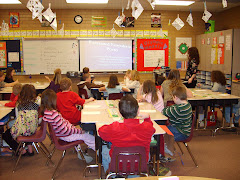For our science activity, we concentrated on the Utah State Standard 2 for 5th grade science, which is that students will understand that volcanoes, earthquakes, uplift, weathering, and erosion reshape Earth's surface. For our activity, we focused on exploring a volcano and also the Grand Canyon, which was shaped through the process of erosion. This is the content section of TPACK.
We chose to teach our activity the way we did because it gives the students an opportunity to visualize how the surface of the Earth is changed. Instead of trying to picture this image in their heads, they can actually see what it looks like. They also can explore the terrain for themselves and come up with their own conclusions. This is a type of discovery learning, which is a good way to teach science. Using this method to teach our content demonstrates the PK part of TPACK.
The technology we used for activity was Google Earth. This fit well with both the content and our pedagogy for teaching it. Google Earth shows the content in a real-life way, showing the topography as well as actual photographs. This enables students to visualize how volcanoes and erosion actually affect the Earth's surface. This technology also allows the students to explore the locations themselves, which helps support our view on effective teaching. Incorporating all these components into our activity demonstrates how TPACK can be used to teach science.
Technology In The Classroom
16 years ago





